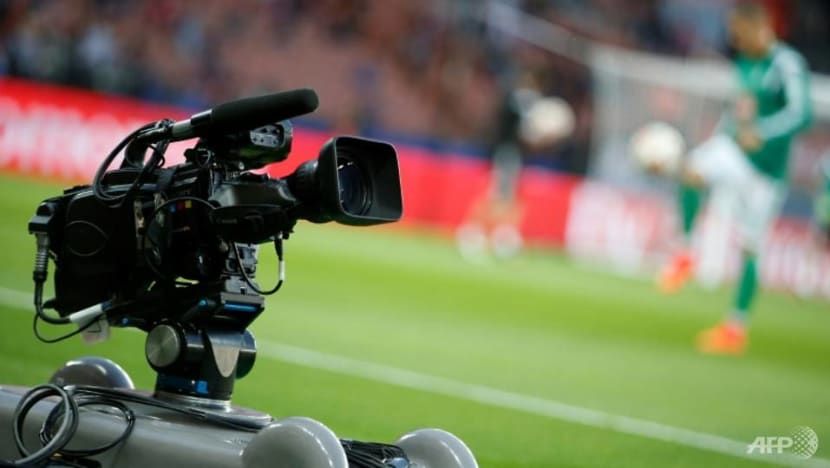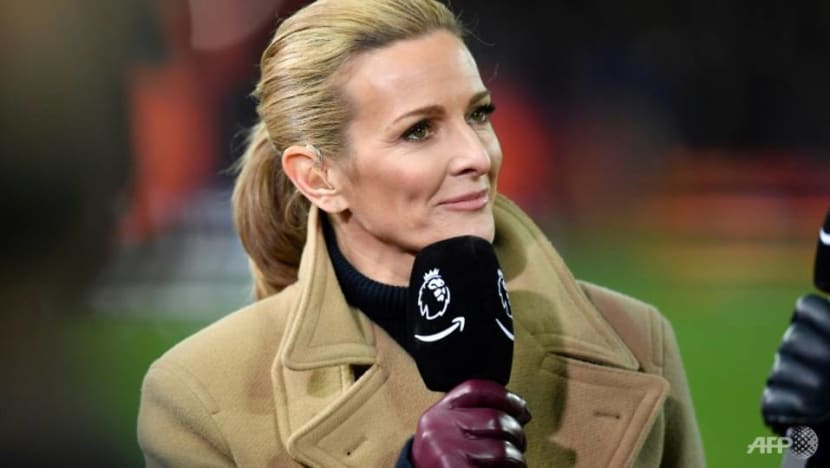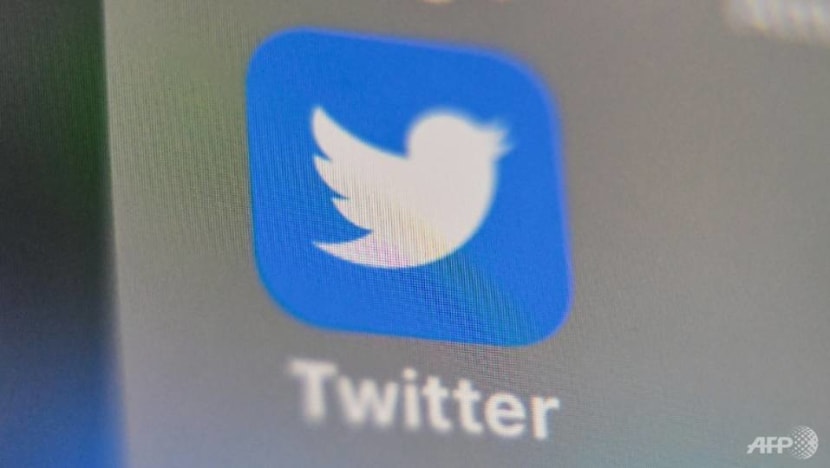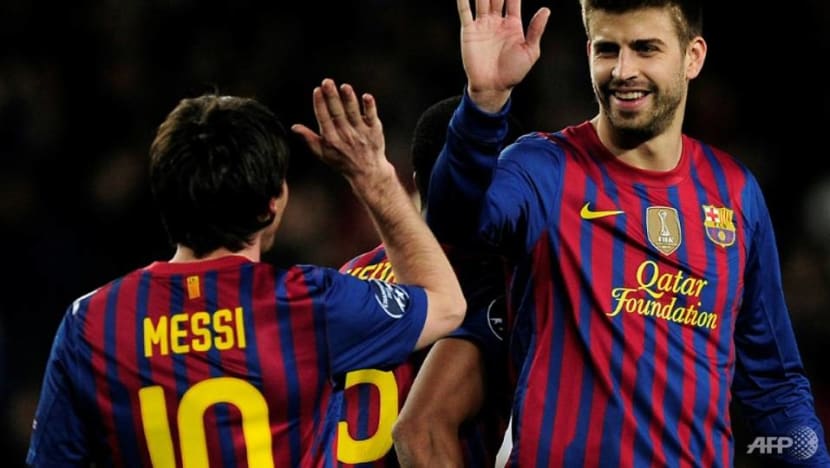commentary Commentary
Commentary: It is time social media played a more important role for football clubs
Despite its phenomenal growth, social media has yet to break that familiar relationship football clubs have with traditional media, says John Duerden.

TV companies who have paid big money for the rights to show football now have no live action to offer paying subscribers (Photo: AFP/KENZO TRIBOUILLARD)
SINGAPORE: One of the unlikeliest changes we have seen since COVID-19 has hit is the lack of spectators at sports, including football matches.
Watching Liverpool vs Manchester United over the weekend, it was striking that, in the biggest game in English football, how empty Anfield was. Where there would usually be 50,000 plus fans egging their team on in a febrile atmosphere, it was all a little sterile.
Moreover, with the pandemic’s economic tentacles still choking growth and jobs, many fans will have to be more cost-conscious.
Consequently, “nice-to-have” things like monthly football TV subscriptions – especially the hefty sums fans have to pay in some parts of the world – will come under scrutiny.
READ: Commentary: Are EPL broadcasting rights just too expensive for television now?
But there may be a better way.
If the pandemic has shown us that we can rely on technology to work, learn, attend weddings and events, meet with long-separated loved ones and still enjoy restaurant food and new movies in the comfort of our homes, then perhaps football too can be provided at a price that does not break the bank.
CAN’T IGNORE SOCIAL MEDIA ANYMORE
Since the English Premier League (EPL) kicked off in 1992, broadcasting money has played a major role in its success.
With an initial deal that was worth 254 million pounds (US$345 million) to the latest deal worth 9.2 billion pounds, clubs have come to rely on such revenue to drive their growth and expansion.
It is no surprise then that the relationship between football clubs and broadcasters is a close one and it is supported by traditional media such as television, newspapers and, radio, both online and off.

Social media, where clubs can communicate directly with fans, has grown enormously in the past decade as well. Facebook, Instagram and Twitter have around 2.45 billion, 330 million and 900 million active monthly users respectively.
Despite that phenomenal growth, social media has yet to break that familiar relationship football clubs have with traditional media.
“Traditional media is still a known quantity with relatively known operating guidelines,” Marcus Keith of 50 Digital, a London-based digital and social media agency in sport that has worked with clubs such as Chelsea, told me.
READ: Commentary: COVID-19 has forced us to rethink stadiums and sports facilities
“For many clubs these ‘operating guidelines’ are still far less clear for social media and are constantly evolving.”
Amar Singh, former social media chief for Premier League team West Ham United and now Marketing and Football Partnerships head for Budweiser, agrees.
“Social media is seen as a tougher beast to ‘tame’ compared with the traditional media where there are longer established relationships and more regulation,” Singh told me, adding that progress has been made however.
“Clubs have very quickly had to get up to speed on social media both in terms of running their own channels and monitoring and engaging with social media.”

Some clubs were initially slow to recognise its value - Manchester United famously waited until 2013 to open a Twitter account. But now, clubs all the way down the English football pyramid have dedicated social media teams.
With nearly half of the planet accessible online - according to creative agency We Are Social’s Digital 2020 report, there are 3.8 billion social media users in the world - they can’t afford not to.
While reliable figures for global TV viewers can be tricky to verify, it has been claimed that around 400 million people usually watch a Manchester United-Liverpool clash – only a fraction of the population of social media users.
Admittedly that not all of those who are on social media are football fans, but it is still a vast market to be tapped for lucrative commercial gains for football clubs.
“If done well, clubs can gain new fans, attract sponsors, raise the popularity of the club and maintain a good image of the club off the pitch,” social media consultant Aysha Ridzuan told me.
READ: Commentary: How Trump uses Twitter to distract the media
As clubs seek to replace old fans, they will have to use social media more and more as younger sections of the population do not consume traditional media to anything the same extent as older generations.
In 2000, 21 million people bought a daily or Sunday newspaper in the UK a figure that fell to 7.4 million by 2020 despite the population growing by around nine million in the same period.
A 2019 UK study found that over-65s watched television news 16 times more than the 16-24 age group, which are more likely to get their news online.
“Clubs need to know where these young fans are, which platform they use the most and create content on those platforms to attract them,” said Ridzuan.
SPECIFIC OPPORTUNITIES
It is not just about attracting new fans but creating opportunities to increase commercial revenue. The sums involved may not match the eye-catching amounts that come from television but are important nonetheless.
“The reality is, that social media does not yet deliver a significant revenue stream for EPL clubs when compared to the huge fees they receive from broadcast deals, commercial partnerships, player sales and match-day revenue,” said Singh.
“However it can open up opportunities - for example growing an audience on Weibo for example can expand a club’s fan-base and commercial strength in a key market such as China.”

Those with a clear objective can perform best. In 2020, Southampton, a mid-ranking Premier League team, took to social media in an attempt to articulate the club’s values and in doing so acquired seven new commercial partners.
This helped the club’s commercial income grow from 14.9 million pounds in 2018 to 18.4 million pounds a year later though this figure falls short of the 112 million pounds the South coast team received in broadcasting revenue.
READ: Commentary: Liverpool and Man Utd have a plan to save smaller English clubs. But no one is trusting them
“We haven’t got the large fan-bases that the top European clubs have to drive their commercial value but where we can grow our support outside of just Southampton fans is online,” said the club’s head of partnerships Darren Henry.
CORONAVIRUS AND CHANGE
Social media has been growing in importance then and that is likely to continue especially as the global pandemic has accelerated change in the sport with broadcasting revenue for the big European leagues looking to have peaked.
In September, the Premier League terminated a three-year deal with Chinese broadcaster PPTV worth US$650 million after a dispute over payment.
In January, French broadcaster Canal Plus handed back the rights to the top flight of French football and called for a Pay Per View model that, it says, will allow for more flexibility in the marketplace.

“The revenue models of clubs and rights holders are undergoing significant transformation as a result of both the emergence of digital and the pandemic,” said Marcus Keith.
With match-day and sponsorship revenue reduced, clubs need to look elsewhere. “Enter social media. Whilst until now social media has broadly been seen as a communications and engagement platform rather than a commercial platform, this is rapidly changing.”
“As we move forward, we believe clubs will see social media on par with broadcast as their revenue models adapt to this new world,” said Keith.
“Finally, with viewership being down for the Super Bowl for the first time in history and also the English Premier League rights values reducing, we feel the industry is absolutely at the point of reappraising the established models and seeking new operating models.”
THE FUTURE
The big question is whether social media can become the go-to communication channel for clubs. Keith believes that there needs to be more change for that to happen.
READ: Commentary: What is behind the EPL’s record goals haul this season?
“For social media to overtake traditional media, clubs will need to be able to spot and execute upon the opportunities much quicker,” Keith said.
“The social media platforms will need to invest heavily in match-day production, and clubs will need to transform their operations to be digital-first across the whole organisation,” said Keith.
“Even though social media has been around for over a decade, we’re still in a position where the majority of clubs’ operations aren’t adjusting to the opportunities that this presents.”

That would change if social media companies move into broadcasting. This has already started to happen with Facebook showing Spain’s La Liga in South Asia.
“They also have the rights to show the Champions League in Spanish-speaking territories in Latin America,” said Ridzuan. “This means that leagues are now more open for their games to be more and more accessible.”
It could eventually result in more major leagues signing broadcasting deals with social media in markets closer to home.
READ: Commentary: COVID-19 - it’s harder to stay sane without sport
READ: Commentary: COVID-19 will plunge EPL clubs into financial woes
“We will see a lot more social media and digital media companies getting involved in acquiring rights and that means fans will not be limited to subscribing to expensive sports channels on TV, leagues will be able to break down the rights and sell them in various packages that will allow clubs to earn more money.”
Ultimately that is what it is about.
As long as clubs still rely on broadcasters for the bulk of their revenue then traditional media will continue to take priority.
Going onto social media should bring cheaper packages for fans as the platform models that these companies use tend to focus on capturing market size through affordable prices rather than the hefty monthly subscription plans we have with our cable TV providers.
As technology has disrupted traditional markets and industries, social media can help make watching football cheaper and more accessible to fans around the world.
John Duerden has lived in Asia for 20 years and covers the region’s sporting scene. He is the author of three books including Lions & Tigers - The History of Football in Singapore and Malaysia (2017).












